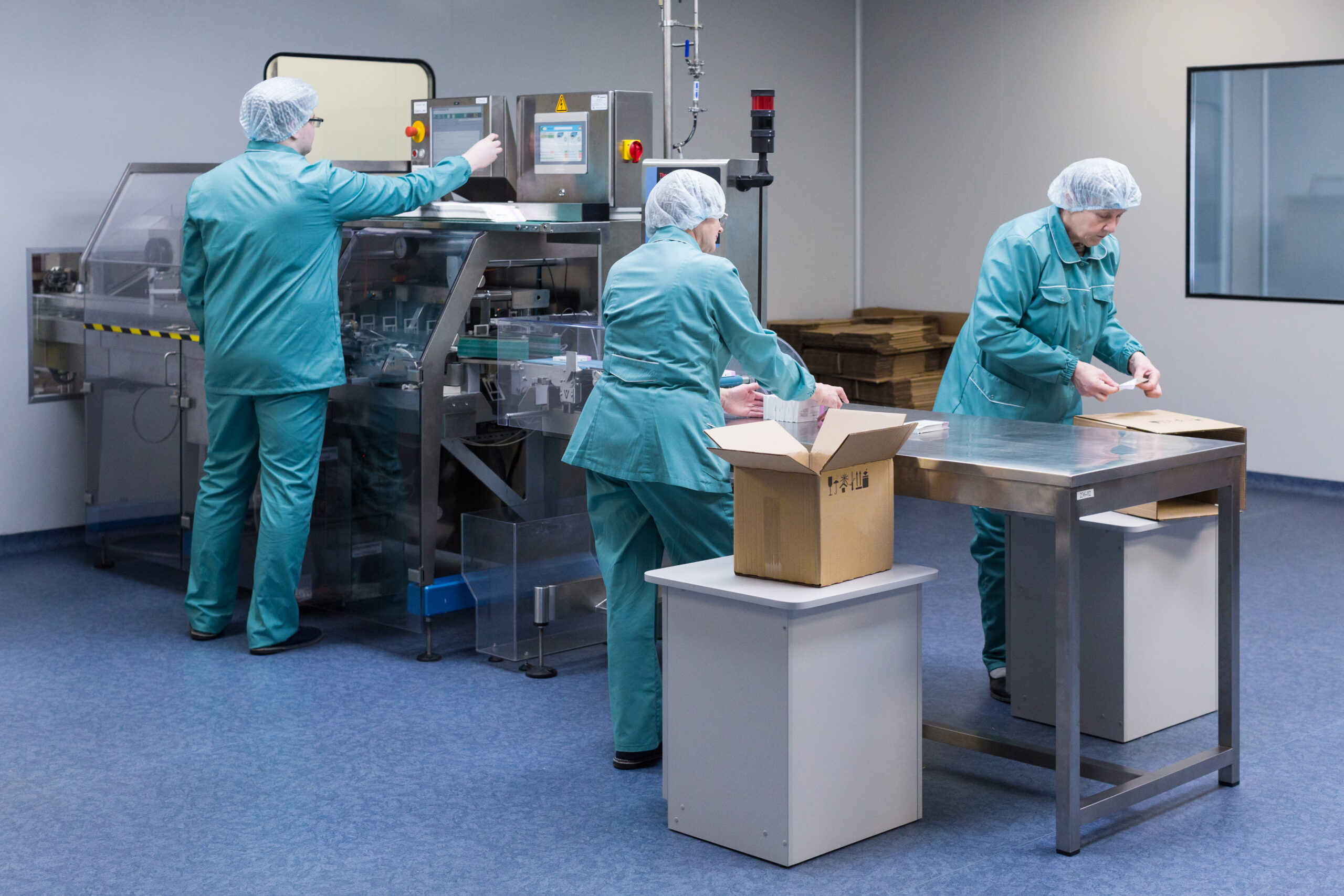As digitalization and automation sweep the supply chain industry, there is growing pressure to upgrade and transform logistics. Retail businesses prioritize scale capability, greater flexibility, reliable automation, increased efficiency, and lower costs. As a result, many are looking for practical ways to use warehouse automation, intelligence, and unmanned systems to achieve sustainable enterprise development in their companies.
Warehouse automation is vital now as companies and warehouse managers try to boost productivity, cut costs, and streamline operations. People can have many different ideas of how warehouse automation works. Automation in the warehouse includes anything from robots to automated procedures, and its goal is to boost efficiency.
For client delivery, warehouse automation companies automatically move inventory into, within, and out of warehouses. As part of an automation initiative, they can reduce labor-intensive tasks, manual data entry, and analysis.
For instance, a warehouse employee might put large products onto an autonomous mobility robot. Warehouse management software tracks inventory moving robots from one end of the warehouse to the shipment zone, keeping all records current. These robots increase this task’s effectiveness, speed, dependability, and precision.
That doesn’t mean robots and programs are displacing people or stealing their jobs. Businesses utilize machines’ accuracy and capacity to operate continuously for extended periods. Without the risk of fatigue, warehouse jobs become safer and more effective. Humans are still present in warehouse automation solutions, handling everything from unloading trailers to fulfilling orders.
Why You Need to Adopt Warehouse Automation
Warehouse automation companies reap many benefits. Automation solutions like conveyors, which are heavy and fixed in place, modern warehouse automation technologies are more adaptable and expandable.
A warehouse’s operation and upkeep can be costly. The average cost to operate a warehouse in the United States in 2022 was $7.96 per square foot.
Warehouse managers must find ways to maximize their costs while decreasing expenditures, and warehouse automation can help.
Here are some significant benefits your business can take advantage of when automating warehouse operations.

Avoid Human Errors
Customers receiving incorrect orders is a tremendous disaster for businesses. Mistakes such as sending the wrong item can lead to losing buyer confidence. Warehouse automation can minimize warehouse staff decisions, decrease pick-and-pack errors, and enhance order accuracy.
Automated systems increase human accuracy even if no system is perfect. These systems can swiftly detect and fix mistakes when they do happen. Inventory tracking software is known to be extremely precise and accurate when picking tasks.
Reduce Operational Costs
The cost of warehouse automation initiatives is high, but they provide companies with quick, positive results. With warehouse automation, companies can achieve a fast ROI is possible through reduced administrative and training costs, leading to a more efficient workforce. Optimizing product handling and storage minimizes shipping errors, enhances customer satisfaction, and contributes to a healthier bottom line with lower operational overhead.
Improved Warehouse Productivity
Warehouse tasks often involve lengthy, repetitive labor. Automation systems streamline operations by eliminating manual load weighing and measuring and reducing time spent receiving and storing goods. This frees employees from more productive activities, boosting retention rates and warehouse efficiency.
Better Work Site Safety
Warehouse robots, such as autonomous mobile robots (AMRs) and automated guided vehicles (AGVs), can automate many high-risk activities. These robots can take on any safety hazards instead of your warehouse staff.
Additionally, warehouse automation systems bring the products to the worker. As a result, it lessens human movement across the building. Fewer people handling goods decreases product damage and raises warehouse safety standards.
Faster Processing Time
Automation speeds up operations and cuts handling time significantly. Robots outperform humans in accuracy and speed, while specialized product-picking tech swiftly measures and records package details. Automated warehouse workflows execute multiple actions autonomously based on specific triggers, making them indispensable for efficient operations.
8 Best Uses of Warehouse Automation in Companies
Warehouse automation uses many technologies that support human workers or complete activities from beginning to end. To maintain inventory and distribute items, warehouses manage various duties and processes.
Warehouse automation systems are equally diverse, including technologies to accelerate operations in companies.
1. Warehouse Management Systems
Applications known as warehouse management systems (WMS) are designed to assist with daily warehouse operations.
These solutions enable you to manage inventory tracking, product picking, packing, and shipping tasks from a single dashboard. WMS can be used to control the machinery for material handling. These systems’ primary goal is to ensure warehouse items move as economically and efficiently as possible—from the moment they enter the warehouse until they leave.
2. Goods-to-Persons Technologies
Most goods-to-person (GTP) solutions involve robots or other equipment that deliver materials to workers for assembly or packing. Other solutions might involve cars that drive around the warehouse collecting materials or cranes. Conveyor systems and automated storage and retrieval solutions are also included in GTP.
3. Automated Sortation Systems
Automated sortation systems identify, sort, and direct products to specific warehouse locations on conveyor systems. These systems utilize RFID, barcode scanners, and sensors for efficient sorting based on product type, reducing order handling and restrictions for enhanced warehouse operations.

4. Pick-to-Light Systems
Pick-to-Light Systems use LED lights and barcodes to help your warehouse employees find the right items to complete orders. Pick-to-light systems supplement human workforces by minimizing walking and increasing efficiency by facilitating quicker item location for pickers.
5. Automatic Guided Vehicles (AGVs)
AGVs traverse a predetermined path across the warehouse using magnetic strips, floor markers (stickers), wires, lasers, cameras, and other sensors. Only large, straightforward warehouse settings with properly created navigation layouts can have these warehouse automation systems. AGVs are not recommended for complicated companies and warehouses with limited space and a high volume of human traffic.
6. Autonomous Mobile Robots (AMRs)
AMRs surpass AGVs in warehouse navigation by employing built-in sensors, cameras, and computers for enhanced adaptability and intelligence. Unlike AGVs, AMRs self-learn and dynamically adjust paths in real-time, autonomously navigating without physical guides or markers. Designed for labor-intensive warehouses with high-volume demands, AMRs operate safely alongside human employees, thanks to sophisticated guiding algorithms that detect and navigate around obstacles.
7. Automated Storage and Retrieval Systems (AS/RS)
An AS/RS accurately and quickly stores and retrieves goods from predetermined warehouse storage locations. AS/RS enhances safety, boosts productivity, and optimizes floor space, making it perfect for manufacturing and distribution facilities.
8. Drones
A prime example of warehouse automation is the utilization of drones, also known as unmanned aerial vehicles (UAVs). Drones efficiently locate cargo and conduct inventory counts using optical sensors, infrared cameras, barcode scanners, and RFID technology. They automatically send alerts for misplaced items or low stock levels, accessing even the most remote areas of the warehouse.
Conclusion
An effective warehouse positively impacts the customer experience. Warehouse automation companies are more efficient and thrive despite rising client demand. It’s essential to keep up with the trends to remain competitive. In the last five years, the adoption of automated storage and retrieval systems has increased by 80%. Using warehouse management systems has resulted in a 30% decrease the typical order-picking time.
With warehouse automation, companies can choose various warehouse automation options based on their demands. These collaborative automation solutions can decrease operational expenses, safety hazards, processing times, and errors. They help boost productivity and efficiency by carrying out everyday warehouse activities effectively and quickly.
When you’re ready to increase efficiency and be one of the top warehouse automation companies, work with Aratum. We have everything you need to optimize your logistics operations, from an inventory management system to a global network of fulfillment centers. Find out which automation solution works best when you book a demo.
The featured photo of this article was sourced from freepik.



